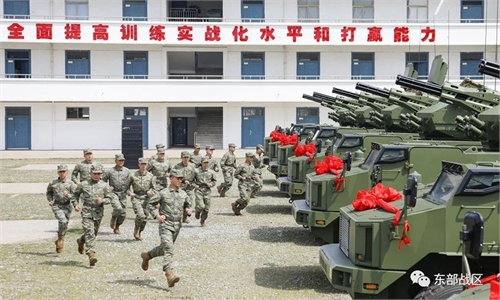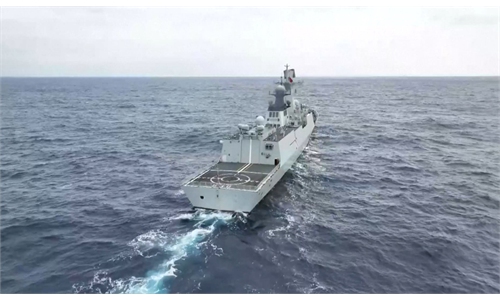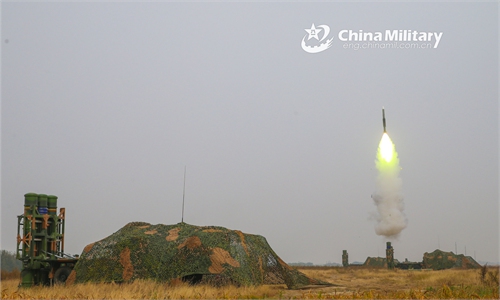China's aircraft carrier Shandong holds intensive drills comparable with Liaoning in West Pacific

The picture shows aircraft carrier Shandong berths at a naval port in Sanya. China's first domestically-made aircraft carrier Shandong (Hull 17) was officially commissioned to the PLA Navy at a military port in Sanya, South China's Hainan Province, on the afternoon of December 17, 2019, making China one of the few countries in the world that have multiple carriers. Photo:China Military
The second aircraft carrier of the Chinese People's Liberation Army (PLA) Navy, the Shandong, is reportedly conducting intensive drills beyond the first island chain, reaching near Guam on the second island chain after completing Taiwan island encirclement drills last week.
The Shandong's ongoing exercise is comparable with, if not surpassing, those previously done by the country's first carrier, the Liaoning, and showed its high level of operational capability, experts said on Tuesday.
Japan's Maritime Self-Defense Force spotted a PLA Navy flotilla consisting of the Shandong, a Type 055 large destroyer, a Type 052D destroyer, two Type 054A frigates, a Type 901 comprehensive replenishment ship and a Type 903 comprehensive replenishment ship when they sailed in Pacific waters from April 10 to Sunday, Japan's Ministry of Defense Joint Staff said in a press release on Monday.
In this period, the Shandong hosted about 140 fighter jet sorties and about 70 helicopter sorties, meaning that the carrier hosted about 210 aircraft sorties in a week, according to the press release.
Japan has been reporting the Shandong aircraft carrier group's movement since April 7 when it first entered the West Pacific from the Bashi Channel. In the 10 days from April 7 to Sunday, the PLA Navy carrier hosted about 330 aircraft sorties, the Japanese Defense Ministry said.
This figure means that the Shandong's drills are more intensive than those previously carried out by the Liaoning, observers said.
In the Liaoning's latest far sea drills in the same region from late December last year to early January this year, the PLA Navy's first carrier hosted about 320 aircraft sorties in 15 days and set a record in terms of the aircraft sortie rate.
These figures show that the aircraft carrier Shandong has reached full operational capability, Wei Dongxu, a Beijing-based military expert, told the Global Times on Tuesday.
Having been commissioned only in December 2019, the Shandong achieved its current status very fast, and one of the most important reasons has been the sharing of the valuable experience of the Liaoning, Wei said.
According to the Japanese press release, the Shandong operated in waters to the east of the island of Taiwan from April 7 to April 12, which was in line with official PLA announcements that the carrier took part in combat alert patrols and "Joint Sword" exercises encircling the island of Taiwan from April 8 to April 10.
From Thursday to Sunday, the Shandong headed further east and reached waters about 600 to 700 kilometers to the west of Guam, a militarized island used by the US as a key node in the second island chain.
The Liaoning also trained near Guam in its previous drills.
The regions in which the Shandong and Liaoning have trained are vital to safeguarding China's national sovereignty and territorial integrity, another Chinese military expert told the Global Times on Tuesday, requesting anonymity.
From waters between the island of Taiwan and Guam, the PLA Navy aircraft carriers can surround "Taiwan independence" forces from the east, giving them nowhere to hide and nowhere to run, and deny external military interference attempts by foreign forces like the US and Japan, the expert said.




